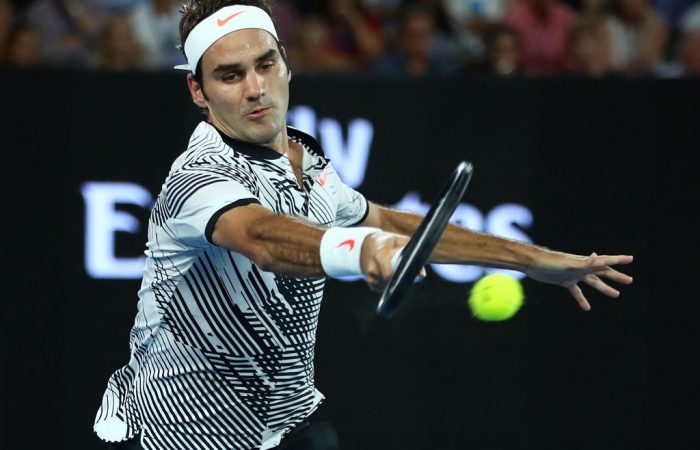22 February 2017 | Tennis Victoria

Tennis Australia High Performance coach Brett McLennan is the Coach Development Manager at Tennis Australia-VIC and TAS. This month he shares his tips on how to improve your timing and reduce anxiety when you play.
Everybody wants to hit the ball with more power but using less effort right? In tennis we call this having good timing. All the pros have it, they make the game look easy. Whilst practicing 5 hours a day for 15 years would certainly enhance your timing on most shots, there is one important tool that players of all levels can use to get closer to the feeling of relaxed, well-timed forehand or backhand: breathing.
Just as we rely on it to survive, similarly, tennis is a sport where breathing is vital to ensure that you can hit the ball smoothly and effortlessly, whilst also reducing anxiety. Just watch Roger Federer for 5 minutes and you will see how relaxed he looks as he is striking a forehand at 140km an hour!
What happens when we hold our breath? Our muscles tense up, our eyes start bulging and we start panicking-not a great recipe for executing a topspin forehand down the line when your opponent is way out of court in the opposite tramline. By breathing effectively, we help to relax our arm through the swing, which in turn leads to us to be able to swing faster and have a better feel of the ball coming off our racquet meaning your strokes will be more smooth and consistent.
Breathing also helps to reduce anxiety when the score is tight and allows you to play more freely in the most important stages of a match- we’ve all been in the position of trying to close out a match and the racquet starts to weigh a ton, your feet feel like lead, and you start to push the ball in hoping for a mistake! What you may not notice in these moments is your breathing is suddenly shallow, and you may even be holding your breath as you strike the ball.
Here are my breathing tips to help improve timing and reduce tension:
- Ideally, we should be breathing out as we contact the ball. As the ball approaches and bounces on your side, start to inhale, and as you begin to swing forward to the ball, begin to breathe out.
- Ensure that your breathing matches up with the shot you are playing. For example, shots that require longer swings like groundstrokes and serves, I would recommend a longer exhale, and for shots such as volleys that are more compact strokes, make your exhale naturally shorter.
- Maintain good rhythm of breathing in between shots as well, ineffective breathing can leave you struggling to last the distance in the long rallies.
- Just like any tennis skill, effective breathing requires practice so next time you are having a hit, spend the first 5 minutes of your warm-up hitting up and down the middle of the court focusing on the timing of your breathing, eventually it will become an unconscious process.

